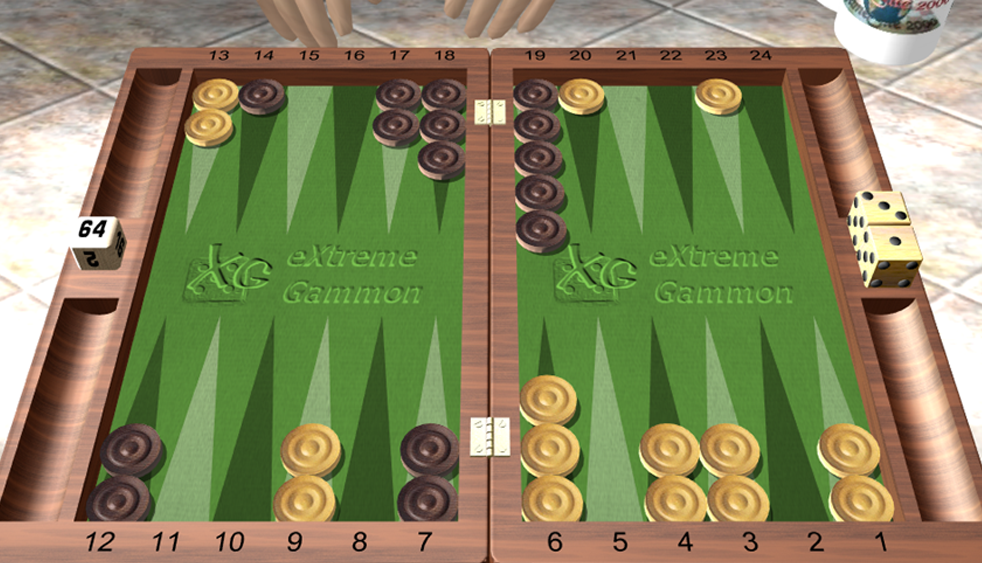Yellow leads 2-0/7. What is the correct cube action for both players?
This doubling decision was recently submitted by one of our club members. Yellow appears to have the upper hand and sees an opportunity to exert some pressure on Black. It helps to start our assessment by understanding Yellow’s assets and potential liabilities.
Assets:
- Yellow has a 19 pip racing lead
- Yellow has a four-point home board while Black is undeveloped
- Yellow is threatening Black’s blot with 15 hitting numbers and has a strong home board to exploit the hit
Liabilities:
- Black has the potential for a priming formation with all checkers well in play
- Black has a defensive anchor on Yellow’s bar point which offers some long term counter-threats
- Yellow doesn’t have enough extra builders in the zone at the moment to complete the closeout
- Yellow has a checker remaining back on the 23 point which still needs to escape
It certainly looks like Yellow is leading in the three important categories of race, structural development, and threat. When this is the case, it is usually justification for an initial double. However, in this position Yellow is leading 2-0. This is very important because the score has a significant impact on the power of Black’s redoubles if they choose to accept this initial cube. Should Black redouble at some point, Yellow will get very little value out of cube ownership (leading 2-0/7 and holding a 4 cube) and furthermore very little value out of gammons since a regular win will catapult him to 6-0 Crawford. Black on the other hand, benefits immensely from gammons after a recube as it takes them from leading 4-2/7 with a regular win, to a match victory. This means Black can get much more value out of cube ownership than at a score of 0-0/7.
When pondering this type of cube, not only should Yellow consider the match score but also “Market Losses”. A market loss occurs after a favorable (two roll) sequence when the resulting position becomes a clear double/pass. In this position, a hit by Yellow and a fan by Black results in a market loss. After such a sequence, Yellow will have been happy to have already doubled. But this sequence only occurs (15/36 x 16/36) or 18.5% of the time. In the other 81.5% of sequences, Yellow will benefit from retaining cube ownership.
In conclusion, Yellow should not double this position although it would be a reasonable but close double if the score was 0-0/7. Black of course has a very easy take. An XG analysis confirms this as well. However, backgammon is a game played between two humans and that can offer some additional considerations into the decision process. On average, a double/take in this position will cost Yellow approximately 1% match winning chances, but a double/(incorrect) pass will gain nearly 4% in match winning chances. This means that if there is more than a 1/5 chance that Black will pass the cube, Yellow will actually profit from what XG deems to be a blunder double. While it is important to understand the technical aspects of a position it is also important to understand the tendencies of your opponent!

Frank is a two-time winner of the Backgammon World Championship in Monte Carlo and current holder of the title. He is a strategic consultant for professional sports teams, and within the sports betting and gaming industries. His work in decision science, critical thinking and sports analytics has been featured in many major news media outlets including ESPN, NFL Network, the New York Times, Fox Sports, Esquire, the Ringer and Showtime. He proudly serves as the co-director of the San Diego Backgammon Club. Learn more: https://frankfrigo.com/


Thanks for the analysis! This one surprised me!